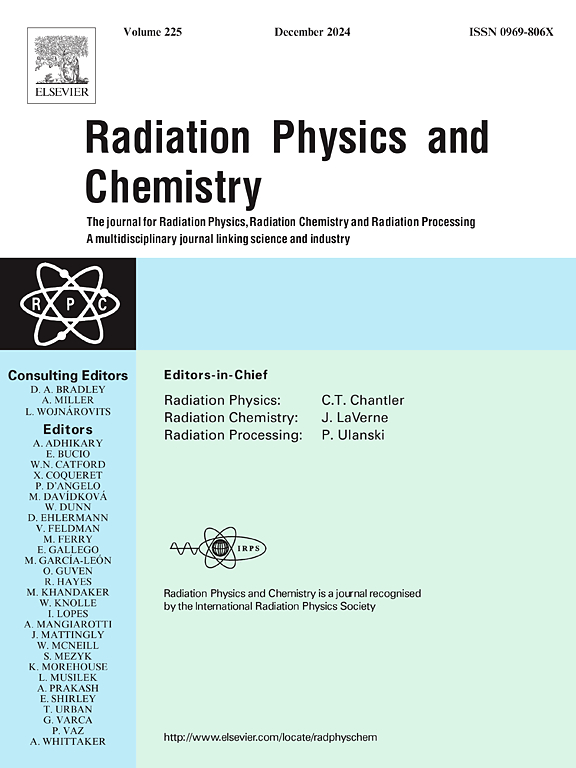Heterogeneity in dose distribution in Yttrium-90 and Holmium-166 microspheres radioembolization of hepatic tumors
IF 2.8
3区 物理与天体物理
Q3 CHEMISTRY, PHYSICAL
引用次数: 0
Abstract
Nuclear medicine therapies face challenges in dosimetric control related to the patient’s anatomy, metabolism, and limitations in dose estimation methods. These challenges are amplified by the introduction of new radiopharmaceuticals and technologies, particularly in the field of theranostics. In this work, the spatial dosimetric heterogeneity generated by microspheres used in radioembolization was characterized and compared as a function of radial position in singular conformations and around clusters. The Monte Carlo simulation package PENELOPE 2014 was used to simulate absorbed doses in homogeneous liver tissue generated by the main microspheres available for treatment: glass - 90Y, resin - 90Y, and PLLA - 166Ho. It was determined the parameters of Russel’s equation that better describe the absorbed dose per initial activity of this microspheres, updating the constants for 90Y, and determining them to 166Ho. At a radial distance of 0.77 cm from the center of the microspheres, 90Y microspheres provide an absorbed dose per initial activity 126 times greater than 166Ho microspheres. At this same depth, Y-90 absorbed dose generated by glass and resin microspheres shows a maximum difference of 4%. For clusters, an increased level of dose per initial activity was observed in the vicinity of all median clusters (around diameter). The results of this study highlight the spatial dosimetric heterogeneity and its significant dependence on the choice of microsphere type, emphasizing the considerable impact often neglected in therapeutic planning worldwide.
求助全文
约1分钟内获得全文
求助全文
来源期刊

Radiation Physics and Chemistry
化学-核科学技术
CiteScore
5.60
自引率
17.20%
发文量
574
审稿时长
12 weeks
期刊介绍:
Radiation Physics and Chemistry is a multidisciplinary journal that provides a medium for publication of substantial and original papers, reviews, and short communications which focus on research and developments involving ionizing radiation in radiation physics, radiation chemistry and radiation processing.
The journal aims to publish papers with significance to an international audience, containing substantial novelty and scientific impact. The Editors reserve the rights to reject, with or without external review, papers that do not meet these criteria. This could include papers that are very similar to previous publications, only with changed target substrates, employed materials, analyzed sites and experimental methods, report results without presenting new insights and/or hypothesis testing, or do not focus on the radiation effects.
 求助内容:
求助内容: 应助结果提醒方式:
应助结果提醒方式:


